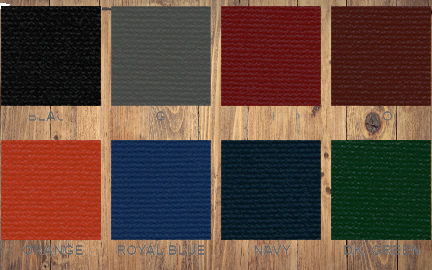Graduation thesis cover color
The final stages of a student’s academic journey are marked by various vital milestones requiring great attention and detail. One such critical aspect is the cover color of the graduation thesis. The cover of a thesis is a crucial component of the entire project, as it sets the tone for the work and provides a first impression for the reader. The color used for the cover can significantly affect the thesis’s readability, attractiveness, and general presentation. Choosing the correct color scheme for the body is a process that should not be rushed, as it requires meticulous attention to detail and a deep understanding of the subject matter.
The graduation thesis cover color significantly determines how the final work will be received. It is critical that the color chosen reflects the information contained within the thesis and captures the essence of the research undertaken. This blog post will analyze the various aspects of help selecting the perfect cover color for your graduation thesis.
Contents
1. Choosing the right color to make your work stand out, and
the right shade for your graduation thesis cover is crucial to creating a professional and impactful document. The colour you choose can significantly affect the tone and impression of your work, so it’s essential to consider your audience and the overall message you want to convey. Choosing a colour that stands out from other documents is best but remains professional. This can be achieved through a bold, bright colour or a muted, understated shade.
The color you choose should also complement your thesis topic and research. Selecting a shade that aligns with your research can create a cohesive and consistent design throughout the document. Ultimately, choosing the right color can help elevate the overall aesthetic of your work and leave a lasting impression on your readers.
2. Consider the significance of colors in different settings.
The selection of shades for a graduation thesis cover is an important decision every student must make. One important consideration is the significance of shades in different settings. Color psychology studies how shades can impact human emotions, behavior, and mental well-being. Understanding the meaning and impact of different colors can help select a suitable shade for a research paper cover that effectively conveys the desired message.
For example, blue conveys a sense of calmness and professionalism, which makes it an appropriate color choice for academic papers and research. On the other hand, red is associated with passion and energy, which can be a good option for creative and artistic works. It is important to note that shade associations and meanings may vary across different cultures and contexts, so it is essential to consider the context of the work before making a final color selection.
3. Tips for selecting colors to create the desired mood
When choosing colors for a graduate research paper cover, it’s essential to consider the emotional response that different colours can trigger in readers. The psychology of colours is vital to creating the desired mood and tone. Here are three tips for selecting colors to create the desired mood for your thesis cover:
- Think about your audience: Consider who your audience is and what messages you want to convey. Different colours can evoke other emotions in people, so choose colours that match the desired tone of your research paper. For example, if your thesis covers a serious topic, consider using darker, more muted shades that convey a sense of gravitas.
- Use shade palettes: Color palettes can create a harmonious and visually appealing design. Generally, colour palettes consist of a dominant colour, a secondary colour, and an accent colour. These colours should complement each other, creating a cohesive and unified look.
- Consider trends: While you want your research paper cover to reflect your style, it can be helpful to consider current shade trends in design. This can make your cover look modern and fresh while reflecting individuality. Remember that trends can change quickly, so stick to timeless colours.
4. Examples of colors chosen by successful students in the past
When selecting a color for your graduation thesis cover, it can be helpful to consider the past choices made by successful students. Based on research and analysis of past graduation theses, several shades have consistently been chosen by students who have achieved high grades and recognition for their work. These include classic, timeless shades such as black and navy blue and lighter shades such as white and light grey.
Additionally, bold and vibrant shades, when used tastefully and with purpose, can also effectively capture attention and represent the personality and spirit of the student and their research paper topic. Ultimately, the shade choice for your graduation research paper cover should reflect your style and taste while also considering the expectations and traditions of your academic institution.
Read Our Other Articles:
- NAC Capsules: A Comprehensive Guide to its Benefits and Uses
- How To Figure Out That /gftqhoxn4eo Means?
- Decoding the Mystery of /fgoteppg5p8: What You Need to Know


Pingback: A Talented Composer Was Alex Lasarenko Cause Of Death. - 365 Post Hub
Pingback: Best Slot Machines In Cripple Creek - 365 Post Hub